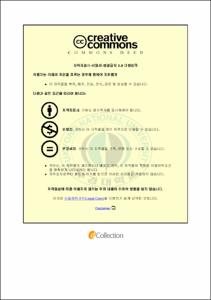Study of the benzene removal in solution for the immobilized carriers using dead Bacillus sp. and polysulfone
- Alternative Title
- Bacillus sp. 사균과 polysulfone 으로 제조한 고정화담체의 수용액 내 벤젠 제거 연구
- Abstract
- Batch and column experiments for the biosorption of benzene from aqueous solution by using dead biomass have been performed. The immobilized bio-carrier with dead Bacillus drentensis and polysulfone was manufactured as the biosorbent. From results of the sorption experiments, more than 98.0 % of the initial benzene was removed from 50 ㎖ solution by using 2 g of immobilized bio-carriers containing 5 % biomass, suggesting that the biosorption process using the immobilized bio-carrier is very useful to clean up benzene-contaminated water. Batch sorption experiments with different reaction times were conducted to determine the optimal reaction time for the maximum removal efficiency of benzene. More than 94.6 % of initial benzene in solution was sorbed on the bio-carriers within 5 minutes of reaction time and the biosorption reached in equilibrium within 2 hours of the reaction. Experiments were carried out to assess the effect of temperature on the biosorption of benzene. Benzene removal efficiency slightly increased (96.1 to 96.7 %) as the temperature increased from 20 to 35 ℃, suggesting that the temperature rarely affects on the removal efficiency. The sorption ability change under the different initial benzene concentration in solution was also investigated. The removal efficiency increased with the increase of the initial benzene concentration (0.001 to 10 ㎎/ℓ). More than 99.0 % was removed from the solution when the initial benzene concentration ranged from 1 to 10 ㎎/ℓ. From results of fitting process for sorption data to Langmuir and Freundlich isotherms, it was recognized that the biosorption isotherms of benzene were more well fitted to Freundlich model (r2=0.9242) rather than Langmuir model (r2=0.7453). From the column experiment, the benzene removal efficiency maintained over 82.1 % until 126 pore volumes of benzene solution (1 ㎎/ℓ) were injected in the column packed with bio-carriers. Results investigated that the immobilized carrier containing Bacillus drentensis and polysulfone is the outstanding biosorbent for the removal of benzene from contaminated solution.
- Issued Date
- 2012
- Awarded Date
- 2012. 2
- Type
- Dissertation
- Publisher
- 부경대학교
- Department
- 대학원 지구환경시스템과학부환경지질과학전공
- Advisor
- 이민희
- Table Of Contents
- CHAPTER 1. INTRODUCTION 1
CHAPTER 2. OBJECTIVE 3
CHAPTER 3. BACKGROUND 4
3.1. Properties of benzene 4
3.1.1. Physical and chemical properties of benzene 4
3.1.2. Health hazards of benzene 6
3.2. Principle of immobilization for the biosorbent 8
CHAPTER 4. EXPERIMENTAL METHODS 11
4.1. Preparation of the biosorbent 11
4.1.1. Isolation and identification of the indigenous microorganism 11
4.1.2. Preparation of dead biomass for the bio-carrier 14
4.1.3. Immobilization of biomass in polysulfone for the bio-carrier 16
4.2. Batch sorption experiments 19
4.2.1. Effect of the amount of biomass in immobilized bio-carriers on the removal efficiency 20
4.2.2. Effect of the amount of immobilized bio-carriers on the removal efficiency 22
4.2.3. Effect of the reaction time on the removal efficiency 23
4.2.4. Effect of the temperature on the removal efficiency 24
4.2.5. Effect of the initial benzene concentration in solution on the removal efficiency 25
4.2.6. Determination of sorption isotherm parameters for the experiments 26
4.3. Column sorption experiment 28
4.4. Analysis of benzene concentration in aqueous solution 30
CHAPTER 5. RESULTS AND DISCUSSION 32
5.1. Properties of the biosorbent 32
5.1.1. Isolation and identification of the indigenous microorganism 32
5.1.2. Characterization of immobilized bio-carriers 35
5.2. Results of batch sorption experiments 37
5.2.1. Effect of the amount of biomass in immobilized bio-carriers on the removal efficiency 37
5.2.2. Effect of the amount of immobilized bio-carriers on the removal efficiency 39
5.2.3. Effect of the reaction time on the removal efficiency 41
5.2.4. Effect of the temperature on the removal efficiency 43
5.2.5. Effect of the initial benzene concentration in solution on the removal efficiency 45
5.2.6. Results of the sorption model fitting for sorption isotherms 47
5.3. Results of column sorption experiment 50
CHAPTER 6. CONCLUSIONS 52
- Degree
- Master
- Appears in Collections:
- 대학원 > 지구환경시스템과학부-환경지질과학전공
- Files in This Item:
-
-
Download
 Study of the benzene removal in solution for the immobilized carriers using dead Bacillus sp. and po.pdf
기타 데이터 / 1.2 MB / Adobe PDF
Study of the benzene removal in solution for the immobilized carriers using dead Bacillus sp. and po.pdf
기타 데이터 / 1.2 MB / Adobe PDF
-
Items in Repository are protected by copyright, with all rights reserved, unless otherwise indicated.